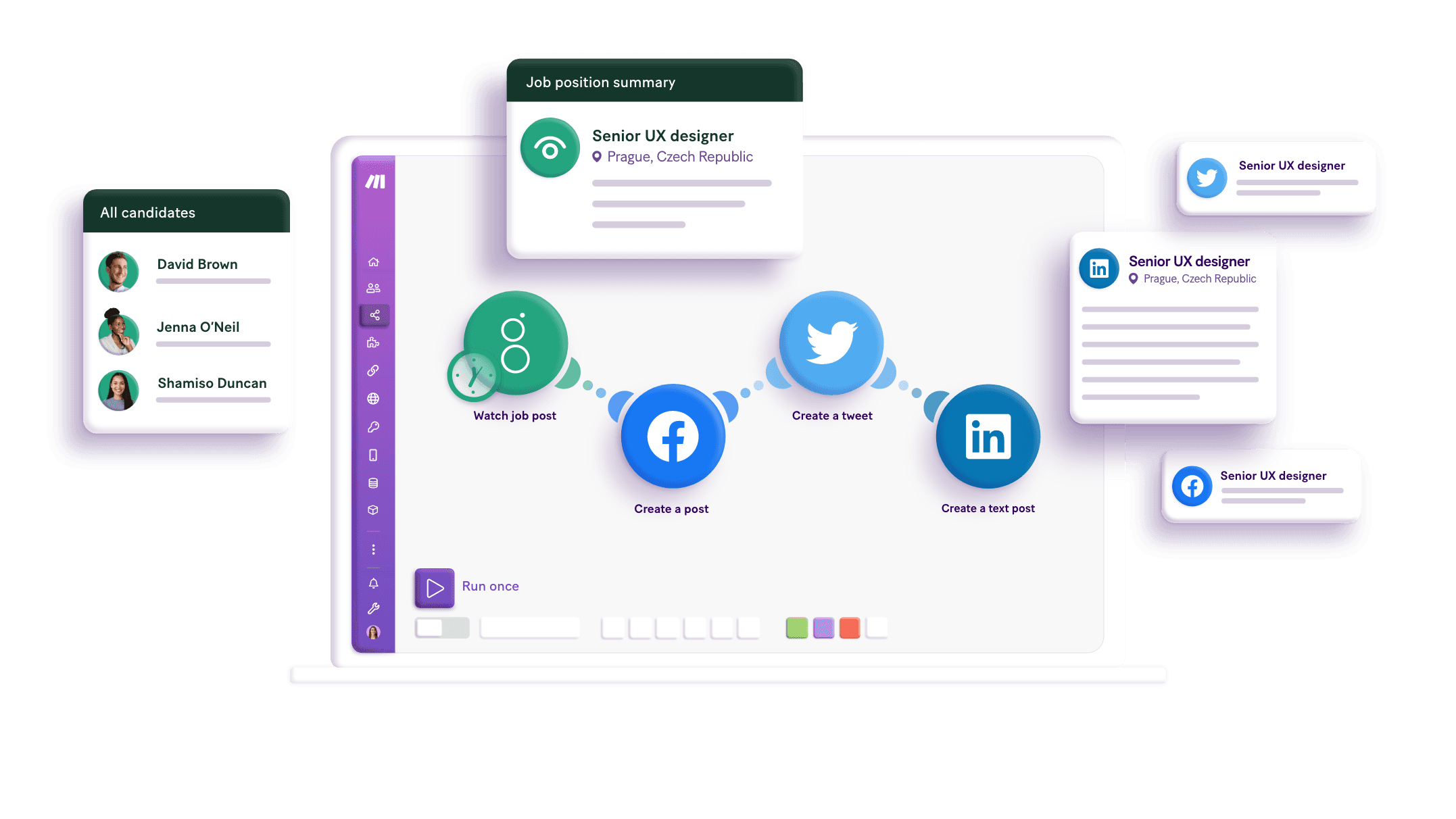Connect Feedly and Zoho Invoice integrations
Connect Feedly and Zoho Invoice with any of your favorite apps in just a few clicks. Design, build, and automate anything for your work by integrating apps like Feedly and Zoho Invoice to create visual automated workflows. Choose from thousands of ready-made apps or use our no-code toolkit to connect to apps not yet in our library.
Trusted by thousands of fast-scaling organizations around the globe






Automate your work. Build something new.
Just drag and drop apps to automate existing workflows or build new complex processes. Solve problems across all areas and teams.

Build your Feedly and Zoho Invoice integrations.
Create custom Feedly and Zoho Invoice workflows by choosing triggers, actions, and searches. A trigger is an event that launches the workflow, an action is the event.
This action will try to find a source from a URL, and add it to a personal feed.
This action will read content from a URL, and create a new article in a board.
Creates a contact with given information.
Creates a contact person for contact.
Creates a new credit note.
Creates a new expense category.
Creates a new payment.
Creates a new price list.
Creates a new project.
Popular Feedly and Zoho Invoice workflows.
Looking to get more out of Feedly and Zoho Invoice? With Make you can visually integrate Feedly and Zoho Invoice into any workflow to save time and resources — no coding required. Try any of these templates in just a few clicks.
Add new Feedly entries as rows in Google Sheets
Automatically log new Feedly entries into Google Sheets. Keep track of your favorite articles by adding them as rows in your spreadsheet.
TRY IT ->Select podcast content ideas from Feedly articles using ChatGPT
Generate engaging podcast topics by transforming Feedly articles with ChatGPT. Stay ahead with fresh ideas and captivating content for your next podcast episode. The template is part of this [Webinar.](https://www.youtube.com/watch?v=EwfCfoVpLgQ)
TRY IT ->Create a new Notion database item for every new article in your Feedly personal board
Effortlessly streamline your content curation process with this template! Every time a new article is added to your personal board in Feedly, Make will automatically create a new page in Notion. This integration allows you to keep all your valuable insights organized and easily accessible, enhancing your productivity and knowledge management. Perfect for bloggers, researchers, and anyone looking to consolidate their reading materials in one place!
TRY IT ->Organize Feedly articles by local/national with ChatGPT and add to Google Sheets 1/2
Organize Feedly articles into local or national, give them a rating, categorize into specific industries using ChatGPT and save them easily in Google Sheets for better content management. Here is template [1/2.](www.make.com/en/integration/12189-create-a-newsletter-with-chatgpt-and-mailchimp-2-2?templatePublicId=12189) The template is part of this [Webinar.](https://www.youtube.com/watch?v=EwfCfoVpLgQ)
TRY IT ->Create Zoho Invoices from Etsy shop receipts
Every time a new Etsy shop receipt is created, Make will automatically create a new invoice on Zoho Invoice, email that invoice to a specific email address, and mark the invoice as sent.
TRY IT ->Create Zoho Invoices from Shopify orders and uploading them to Nextcloud
Every time a new order is created on Shopify, Make will automatically create a new invoice on Zoho Invoice and upload it as a pdf to Nextcloud.
TRY IT ->Email Zoho Invoice
This templates retrieves all your new draft invoices from Zoho and emails them to the specified customers. The body of each email can be dynamically customised for your needs.
TRY IT ->Generate PDFMonkey documents from Zoho invoices
Every time a new Zoho Invoice is created, Make will automatically use the data in that invoice to generate a PDFMonkey document.
TRY IT ->Create Zoho invoices from WooCommerce orders
Every time a new WooCommerce order is made, Make will automatically create a new Zoho Invoice.
TRY IT ->
FAQ
How it works
Traditional no-code iPaaS platforms are linear and non-intuitive. Make allows you to visually create, build, and automate without limits.






